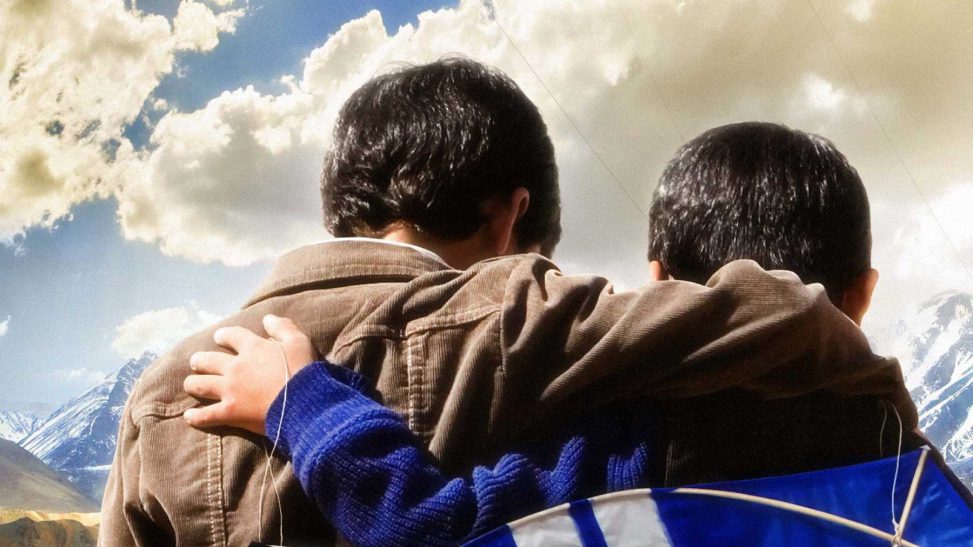The Kite Runner (film): Ethnic Discrimination, Culture Bereavement, and Identity Crisis with Culture Difference
The film “The Kite Runner,” directed by Marc Forster in 2007, was based on a novel written by an Afghan American author Khaled Hosseini. This blog will explore three themes derived from the film: ethnic discrimination, culture bereavement, and identity crisis with culture difference. Considering my little understanding of Afghanistan and the Pashtun and Hazara community, exploring these themes in the film will broaden my understanding of diversity topics. The next section will be a brief description of the film story, followed by a discussion of three themes with reflections on education, and a summary.
The Kite Runner – Trailer from Paramount Movies
Brief Description of The Kite Runner
The film begins in the era before the Russian invasion of Afghanistan in the 1970s. Twelve-year-old Amir is the son of a wealthy merchant from the Pashtun community, which makes up the largest ethnic group in Afghanistan. Another main character of the film is Hassan, the son of Baba’s servant (Ali), who is in the Hazara community, one of the most oppressed groups in Afghanistan. Amir is sensitive and recreant. He never fights back when teased by other kids. Conversely, Hassan is brave and kind. He once used a slingshot to scare off the bully named Assef (a Pashtun child) to protect Amir.
After Amir has cut down all opponents’ kites during the annual kite-flying contest, he needs to collect his kite as the trophy. Hassan is the best kite runner in Kabul. He promises Amir to collect his kite. However, Amir does not see Hassan come back after a long-awaited time. Finally, Amir finds Hassan cornered by Assef and his friends. Refusing to give the kite to them, Hassan is beaten and raped by Assef. Amir is too scared to help Hassan, so he runs away. After the incident, Amir feels guilty whenever he sees that kite. With mixed feelings, Amir seeks to relieve the guilt not by seeking forgiveness, but by intentionally accusing Hassan of stealing Baba’s watch to expel Hassan and Ali. Although Baba immediately forgives Hassan, Ali still decides to leave with Hassan.
After a few months, when the Russians invade Afghanistan, Baba and Amir flee the war to America. Twenty years later, Baba works in a gas station and sells second-hand goods; Amir graduates from college and wants to become a writer in America. After Baba’s death, Amir receives a call from Rahim Kahn, his father’s old business friend, who urges him to return to Afghanistan. Rahim Kahn tells Amir the sad truth that Hassan is the private son of Baba and Ali’s wife. Now, Hassan and his wife are killed, leaving their son to live in Afghanistan. Rahim asks Amir to rescue Hassan’s son, Sohrab, who was kidnapped and treated like a sex slave by Assef. In the end, Amir repays his “debt” owing to Hassan by safely taking Sohrab to America. In the last scene of the film, Amir flies a kite with Sohrab and he runs to get the kite for Sohrab. Now, he becomes “the kite runner” for Hassan’s son.
Movie CLIP – Teaching Kite Flying (2007) HD from Movieclips
Ethnic Discrimination
The problem between the ethnic minority and majority is often associated with social class or status that contributes to inequalities of power and material privileges (Guinier & Torres, 2002, as cited in May & Sleeter, 2010, p. 3). The conflict of social power and inequality between Pashtuns and Hazaras is amplified in the film. Although Hassan is the biological brother of Amir, he is treated differently by Baba. His right to education is denied because of his ethnicity as a Hazara. Consequently, Hassan has no chance to escape from discrimination and harassment against him in Afghanistan. The example can be seen when Assef insults Hassan and says, “Afghanistan is the land of the Pashtuns. We’re the real Afghans. Not this flat-nose Hazara. His people pollute our homeland. They dirty our blood” (Forster, 2007, 0:14:02). Hassan’s situation can explain the problem of the myth of meritocracy that insists, “everyone has equal opportunity” (Denis & Schick, 2003, p. 63). The truth is that Hassan is far from having the equal opportunity as he cannot even protect himself from oppression. It is also depressing to see how Hassan is treated by Amir, even though Hassan has shown his loyalty and trust to him as a friend. Since Amir grows up in an environment where the Pashtuns have a higher hierarchy than Hazaras, he is affected by the dominant ideology, believing that Hassan is beneath him because of Hassan’s ethnicity and religion. For the minority group, it is difficult to narrow the gap existing between the rich and poor. They experience a shortage in the social capital that is directly related to economic capital (Wagner, 2016), consequently, they become underprivileged or marginalized in society soon after, and their children end up with little educational opportunity.

Hassan (Ahmad Khan Mahmoodzada), left, and Amir (Zekiria Ebrahimi) in “The Kite Runner.”
Credit: Phil Bray/Paramount Vantage (https://www.nytimes.com/2007/12/14/movies/14kite.html)
On the other hand, the dominant group controls most resources; hence, fewer recourses are left for society’s minorities. For example, even Baba and Amir cannot live in America like the way they used to live in Afghanistan since they have limited social capital and resources in America. Another example in Canada is the controversial issue of employment diversity in Canadian universities. The Employment Equity Program (EEP) in Canada is to eliminate workplace barriers and enhance employment equity for minority groups (Government of Canada, 2017). Even with the fact that people of color are insufficiently represented, and most Canadian university professors are white (Whitworth, 1991, cited in Nakhaie, 2013), some people still argue that the EEP policies are “systemic preferential hiring” which results in “special treatment” for minority groups, despite their competence and qualifications (Nakhaie, 2013, p. 46). It is a typical strategy of how dominating groups describe themselves as underprivileged in the policies that combat discrimination against minority groups.
Furthermore, one Canadian research study reveals that applicants with English names are 35% more likely to receive an interview call than those with Indian or Chinese names (Oreopoulos & Dechief, 2011). The results represent how dominant ideology attempts to legitimize the inequalities in the job market. Indeed, the reality is that they can quickly identify people’s race and ethnicity by their names. As a Chinese person, I assume I could choose to use an English name on my resume to get more chances for interviews. However, why should I change my name and identity to get employed? This kind of compromise is fundamentally unfair, and it would mark the failure of diversity and inclusion practices in Canada.
Culture Bereavement
As a new immigrant in Canada, I can relate to Baba’s feeling after having escaped from his homeland to live in another country. In Afghanistan, he is one of the wealthiest men with a relatively high social position, but in America, he suddenly belongs to a socially inferior group. His job at the gas station is symbolic of this status changing. His language, religions, and original culture have been isolated and marginalized by America’s dominant culture. Similarly, due to the loss of values, social structures, and networks, Baba undergoes “culture bereavement” (Bhugra & Becker, 2005, P. 18), making him suffer from feeling guilty about abandoning his culture and homeland. He is eager to relieve his guilt. For example, he refuses the treatment from the doctor who is originally from Russia, and he encourages Amir to write more about their homeland.
While people like Baba find it challenging to find cultural identity and acceptance in western society, they tend to be criticized by other Afghans for running away when their country is in danger. Relating it to what Hulko says in her interview video (n.d.), “when intersectionality theorizing started there was a heavy emphasis on focusing on people who were multiply marginalized … so marginalized on the basis of more than one social identity factor … so often on the basis of their race, class, and gender” (02:07). Besides the fact that most people are marginalized simultaneously from various aspects (e.g., social class, gender, race, and sexuality), they might also be oppressed by dominated groups and people from the same race. According to Bhugra and Becker (2005), cultural bereavement is the feeling resulting from “loss of language (especially colloquial and dialect), attitudes, values, social structures, and support networks” (p. 19), which is affected by the interaction of the “migration process, cultural identity, and cultural congruity, along with biological and psychological factors” (p. 23). As an immigrant, besides learning the language, I also need to learn Canadian social structure, culture, values, and beliefs. The process might be a struggle due to the feeling of isolation. For instance, my older family members asked me questions like, “Why do you want to live in Canada? Don’t you love your country? Why do you choose to live without your family members?” Their questions made me feel incapacitated because they could never understand my situation associated with my race and ethnicity in Canada, which means they could not empathize with my challenges living alone in another country. The misunderstanding between my family members makes me feel frustrated. Although my experience is different from Baba’s (because he is forced to leave his country due to the war), we encounter a different level of cultural bereavement.
Click the link below to read more about cultural bereavement.
Migration, cultural bereavement and cultural identity (Bhugra & Becker)
Identity Crisis with Culture Difference
Many immigrants might experience identity crisis when they first move to other countries. In the film, both Baba and Amir experience a significant shift in social class and cultural values. Bhugra and Becker (2005) explain identity as “the totality of one’s perception of self, or how we as individuals view ourselves as unique from others” (p. 21). Most immigrants have to face the reality that their racial identity is different from the majority, which might prompt an identity crisis if they fail to find their self-identity. After living in America for 20 years, Amir still decides to fix his mistakes by going back to Afghanistan for Hassan’s son because he cannot forget what has happened there. Both American and Afghan cultures shape Amir’s identity as an American Afghan. It refers to a hybrid identity formed via the mixing of more than one cultural influence to create a new individual identity (Wagner, 2016) when considering cultural impacts on immigrants.
Generally, immigrants are affected by multiple cultures and values. On the other hand, identity is hard to be defined and always changing as we are significantly influenced by our environment and the people around us (Sánchez-Flores, 2014). For example, Amir has become more confident and independent after living in America. He insists on becoming a writer, which is against his father’s intention. Baba tells him, “Just don’t embarrass me. That’s all I ask” (Forster, 2007, 0:56:02). It reflects that his father has emotionally oppressed Amir. But even under this situation, he still wants to become a writer. Another change I can see in Amir is that he is no longer the Afghan who will be influenced by the traditional cultural norms against women, as he accepts his wife’s past and still wants to marry her. His wife, Soraya, is the victim of gender marginalization in society. She told Amir, “We left (Virginia) because I ran away with an Afghan man. I was 18. I guess I thought I was being rebellious. We lived together for almost a month. All the Afghans in Virginia were talking about it” (Forster, 2007, 1:06:48). Amir’s change relates to what Taylor(1994) says about the discovering of one’s identity, “Thus my discovering of my own identity doesn’t mean that I work it out in isolation, but that I negotiate it through dialogue, partly overt, partly internal, with others … My own identity crucially depends on my dialogical relations with others” (p.34). Amir’s identity has changed through dialogical relations with his father, wife, and society.

Soraya Walking with Amir
(https://www.youtube.com/watch?v=XP7ARXpzt9Q)
From my perspective, it is critical to understand hybrid identity in the Canadian educational context. Students from the non-dominant community tend to be vulnerable “when the social and cultural fabric of their classroom learning interactions are foreign, uncomfortable, or confusing” (Pransky & Bailey, 2003, p. 382). For example, in Canadian schools, if a student shows less English or French capability in school, teachers would tend to label them as “struggling students.” Language ability can be obtained via proper training, but self-esteem and cultural recognition are hard to enhance, especially for immigrant students who are forming a hybrid identity. Educators should identify immigrant students’ distinct strengths from the students with monocultural backgrounds with the mindset that different cultural backgrounds contribute to a diversified classroom.
Despite many other factors causing identity crisis among immigrant students, cultural differences and ongoing cultural misunderstanding are significant, especially between Western and Eastern countries. For instance, the film has been criticized for describing Afghanistan as an underdeveloped nation without history and culture. Some persons of authority say that “the film portrayed an unfair and demeaning picture of their culture, religion, religious laws, ways of life and their political justifications” (Visser, 2008). It also reflects the ideological difference among the Western and Eastern countries. For example, Western countries embrace individualism as the priority of a free society, while most Eastern countries are often influenced by Confucianism, which outlines the importance of avoiding conflicts and celebrating consistent behavior as a group. Taking the recent incident, Covid-19, as an example, citizens in western and eastern countries reacted differently to wearing masks at the beginning of the pandemic. Most Westerners resisted wearing a mask, arguing the policy violates their rights, whereas most Easterners obeyed what their government’s directives (staying at home and wearing a mask).
There is nothing wrong with admitting the cultural differences and misunderstanding, but ignoring them is. A Canadian study conducted by Parkin and Mendelsohn (2003) indicates:
Younger Canadians (those between 18 and 30) are more likely than those over 30 to say that the items relating to diversity and tolerance make them very proud. In fact, the single biggest difference between these two age groups is on multiculturalism, which makes 66% of those between the ages of 18 and 30 very proud to be Canadian, compared with 50% of those over the age of 30. (p. 10)
To effectively eliminate misunderstandings, both Westerners and Easterners need to put aside negative assumptions and stereotypes against each other before learning the cultural difference. As Guo (2012) states:
This reflects a broader lack of knowledge and readiness to approach cultural and religious diversity. Fear and unfamiliarity are exacerbated by curriculum and teaching practices in K-12 education, which are characterized by Eurocentric perspectives, standards, and values, and do not reflect the knowledge and experiences of our culturally and religiously diverse student and parent population. (p. 5)
It will be essential for educators to recognize those cultural differences that affect immigrant students’ identity to adjust their educational practice responsively.

By Nathan Dumlao at unsplash (https://unsplash.com/photos/ewGMqs2tmJI?)
Reflection on My Role as An Educator
After watching this film, I have learned multiple aspects concerning the implication in education. First, I need to analyze how my social identity, as an immigrant in minority groups in Canada, influences my privileges and oppressions. Guo (2012) suggests:
pre-service teachers need to unlearn their privilege and need to recognize and make use of the knowledge of immigrant parents to provide a better public education for immigrant students. It is also important for teacher educators to support pre-service teachers in developing a critical awareness of cultural and religious discrimination and the attitudes underlying it. (p. 18)
Moreover, to fully identify my potential discrimination and prejudice, I need to reflect on myself frequently to avoid the three typical ideological assumptions indicated by Denis and Schick (2003) when understanding the “anti-racist pedagogy” (P. 61). That means to have an ideology: race matters, and the inequality should not only be explained by cultural difference; not everyone has equal opportunities; the notion of innocence and goodness is the proof of superiority (Denis & Schick, 2003). Furthermore, identifying the deficit ideology is also essential. Gorski (2010) says the following:
… They appear implicitly in what has become common language in education: ‘at-risk,’ ‘remedial,’ ‘culturally deprived,’ ‘disadvantaged’—the very normalization of these idioms, the way they slide so easily off the tongues of many of us who count ourselves among equity advocates, demonstrates the hegemonic power of mass socialization. (p. 21)
How can education help immigrant students? I think the emphasis on equity and equality in education is not yet sufficient. More educational policies and procedures should be implemented in multiple aspects. For instance, educators need to create a level playing field and equal standards and expectations for minority students. Meanwhile, essential supportive policies and practices, such as financial and academic support, should be available and accessible to those students. Furthermore, schools should keep a reasonable ratio of students of different ethnicities to enhance multiculturism in school. In this way, schools give disadvantaged students a priority for some of the seats, which also positively influences teachers’ education of diversity as they will meet students from different backgrounds. Consequently, multiculturism will equip teachers with the practical knowledge of teaching with diversity. As Pidgeon (2008) says, “many minority and Indigenous groups’ ways of knowing are different from the dominant culture” (p. 341); multiculturalism has been emphasized in education, including respecting each students’ background, first languages, and cultural identities. Joshee and Sinfeld (2010) also state that “we believe that the growing interest in international dialogue on multiculturalism and multicultural education can help to provide more counter- discourses that might be taken up in the Canadian context” (p. 71).
However, if my cultural understanding has only relied on literature and books without including individuals’ social factors, I could not provide a proper learning environment for students from minority groups. Therefore, to minimize the impact of identity crisis and cultural bereavement on students, I need to understand my students and talk with them in a meaningful way, considering students themselves are dynamic resources of culture for me to learn. Most importantly, I should appreciate critical multiculturalism in pedagogy, as it “gives priority to structural analysis of unequal power relationships, analyzing the role of institutionalized inequities” (May & Sleeter, 2010, p. 10). All those knowledge and implications help me to foster an inclusive classroom.
Summary
Watching the film “The Kite Runner” helps me further understand that the oppression of minority groups is not only related to the dominant ideology and cultural differences but also closely associated with “inequitable power relationship” among social classes (May & Sleeter, 2010, p. 4). With this reality, financial and academic support with institutional policy and procedures are needed. Moreover, immigrant students often need to deal with hybrid identity or different extent of an identity crisis. As Collins (1990) states that, “an analysis of interlocking oppressions reveals that there are few pure victims or oppressors, for each ‘individual derives varying amounts of penalty and privilege from the multiple systems of oppression which frame everyone’s lives’ (as cited in Dahmoon, 2011, p. 235). Educators need to identify and embrace the cultural difference between themselves and students with a comprehensive understanding of other aspects of identity, like social class, race, sexuality, and gender, that might contribute to students’ social oppressions, referring to the concept of “intersectionality” which indicates that the “power” does not exist separately from “aspects of identification” (Crenshaw, 1989, 1994, as cited in Dahmoon, 2011).
The line, “For you, a thousand times over” (Forster, 2007), appears twice in the film. It is first said by Hassan to Amir for his promise to run after and get the kite and then said by the grown-up Amir to Hassan’s son. I want to use it in a different context: for equity and diversity in education, a thousand times over!
References
Bhugra, D., & Becker, M. (2005). Migration, Cultural Bereavement and Cultural Identity. World Psychiatry, 4(1), 18-24. https://www.ncbi.nlm.nih.gov/pmc/articles/PMC1414713/
Dahmoon, R. K. (2011) Considerations on mainstreaming Intersectionality. Political Research Quarterly, 64, (1), 230-243.Employment and Social Development Canada. (2017, May 4). Legislated employment equity program. Canada.ca. https://www.canada.ca/en/employment-social-development/programs/employment-equity/leep.html
Forster, M. (Director). (2007). The Kite Runner. DreamWorks Pictures and Paramount Classics.
Giroux, H. A. (2013). Neoliberalism’s war against teachers in dark times. Cultural Studies ↔ Critical Methodologies, 13(6), 458-468. https://doi.org/10.1177/1532708613503769
Guo, Y. (2012). Exploring linguistic, cultural, and religious diversity in Canadian schools: Pre-service teachers’ learning from immigrant parents. Journal of Contemporary Issues in Education, 7(1). https://doi.org/10.20355/c5qc78
Hulko, W. (n.d.). Educ 5041 [Video]. Thompson Rivers University Opening Learning. https://barabus.tru.ca/med/educ5041/educ5041_hulko_2_2_1b.html
Joshee, R., & Sinfield, I. (2010). The Canadian multicultural education policy web: Lessons to learn, pitfalls to avoid. Multicultural Education Review, 2(1), 55-75. https://doi.org/10.1080/2005615x.2010.11102869
Katelyn, I. (n.d.). Turning point. The Kite Runner. https://kiterunnerlit.weebly.com/turning-point.html
Manohla, D. (2007, December 13). From memories, there’s no escape (Published 2007). The New York Times Breaking News, US News, World News and Videos. https://www.nytimes.com/2007/12/14/movies/14kite.html
May, S., & Sleeter, C. E. (2010). Critical multiculturalism: Theory and praxis. Routledge.
Movieclips. (n.d.). The Kite Runner (10/10) Movie CLIP – Teaching Kite Flying (2007) HD [Video]. YouTube. https://www.youtube.com/watch?v=ypf6WHYpeRU
Nakhaie, R. (2013). Ideological orientation of professors and equity policies for racialized minorities. Canadian Ethnic Studies, 45(1-2), 43-67. https://doi.org/10.1353/ces.2013.0026
Parkin, A., & Mendelsohn, M. (2003). A New Canada: An Identity Shaped by Diversity (11). Centre for Research and Information on Canada. https://library.carleton.ca/sites/default/files/find/data/surveys/pdf_files/cric-gmnc-03-not_000.pdf
Pidgeon, M. (2008). Pushing against the margins: Indigenous theorizing of “Success” and retention in higher education. Journal of College Student Retention: Research, Theory & Practice, 10(3), 339-360. https://doi.org/10.2190/cs.10.3.e
Pransky, K., & Bailey, F. (2002). To meet your students where they are, first you have to find them: Working with culturally and linguistically diverse at-risk students. The Reading Teacher, 56(4), 370-383. https://doi.org/10.1598/rt.56.4.3
Sánchez-Flores, M. (2014). Excerpts from TRU Open Learning Course SOCI 3991: Sociology of Diversity—Issues for Canadians. Kamloops, BC: Thompson Rivers University, Open Learning.
St. Denis, V., & Schick, C. (2003) What makes anti-racist pedagogy in teacher education difficult? Three popular ideological assumptions. Alberta Journal of Educational Research, 49(1)
Taylor, C. (1994). The politics of recognition. In A. Gutman (Ed.), Multiculturalism: Examining the politics of recognition (pp. 25–73). Princeton, NJ: Princeton University Press.
Visser, F. P. (2008). The Kite Runner, film directed by Marc Forster, screenplay written by David Benioff: movie review. African Journal of Psychiatry, 11(4), 299-301. https://www.longdom.org/open-access/the-kite-runner-jop-11-215.pdf
Wagner, C. (2016). Migration and the Creation of Hybrid Identity: Chances and Challenges. The Phenomenon of Migration, 237-255. https://doi.org/10.5281/zenodo.999620



Leave a Reply
You must be logged in to post a comment.